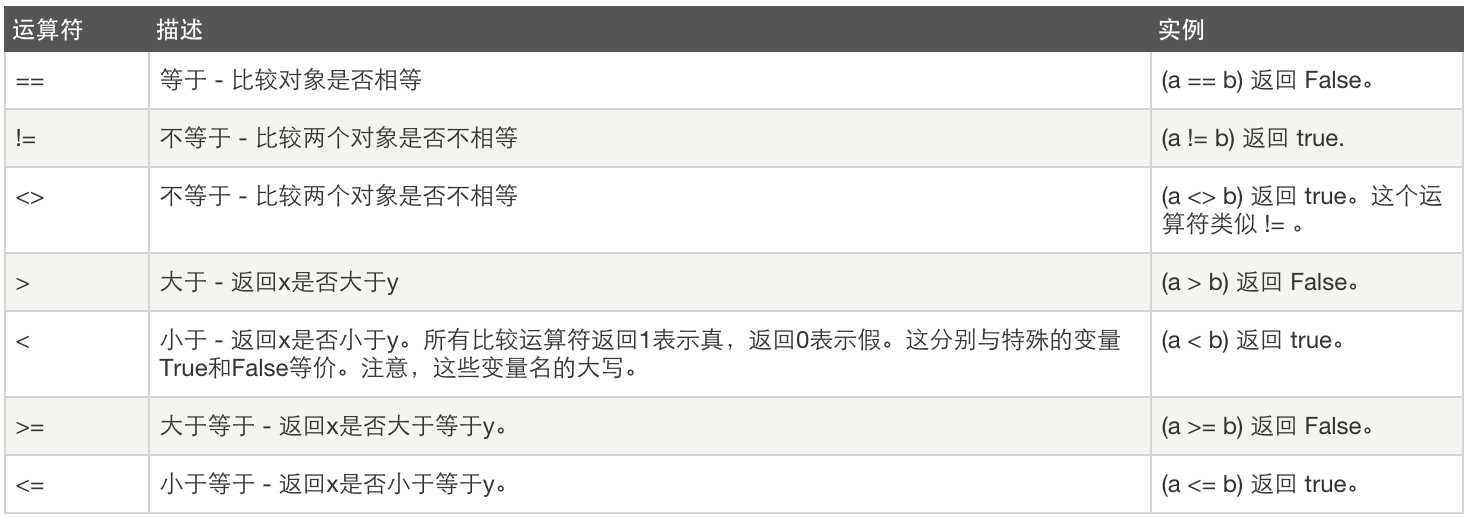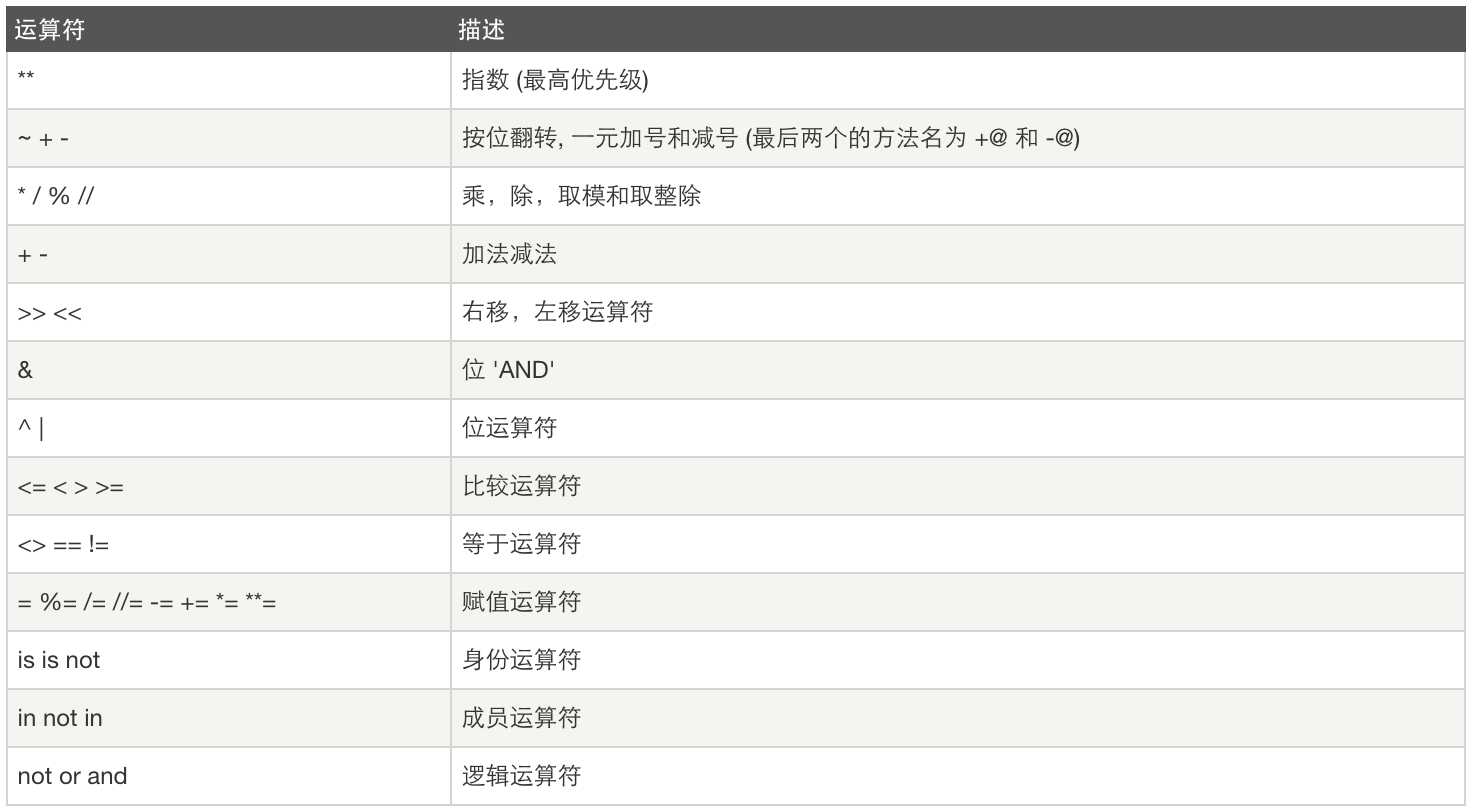标签:
本节内容
# Author AlleyYu import sys print(sys.path) print(sys.argv) import os print (os.system(‘dir‘)) #调用系统命令 cmd_res=os.system(‘dir‘) print (cmd_res) cmd_res2=os.popen(‘dir‘) cmd_res1=os.popen(‘dir‘).read() print ("MARK1---------->",cmd_res1) print ("MARK2---------->",cmd_res2) os.mkdir(‘newfilehere‘)#当前目录新建文件
1、数字
2 是一个整数的例子。
长整数 不过是大一些的整数。
3.23和52.3E-4是浮点数的例子。E标记表示10的幂。在这里,52.3E-4表示52.3 * 10-4。
(-5+4j)和(2.3-4.6j)是复数的例子,其中-5,4为实数,j为虚数,数学中表示复数是什么?。
int(整型)
在32位机器上,整数的位数为32位,取值范围为-2**31~2**31-1,即-2147483648~2147483647
在64位系统上,整数的位数为64位,取值范围为-2**63~2**63-1,即-9223372036854775808~9223372036854775807
long(长整型)
跟C语言不同,Python的长整数没有指定位宽,即:Python没有限制长整数数值的大小,但实际上由于机器内存有限,我们使用的长整数数值不可能无限大。
注意,自从Python2.2起,如果整数发生溢出,Python会自动将整数数据转换为长整数,所以如今在长整数数据后面不加字母L也不会导致严重后果了。
float(浮点型)
浮点数用来处理实数,即带有小数的数字。类似于C语言中的double类型,占8个字节(64位),其中52位表示底,11位表示指数,剩下的一位表示符号。
complex(复数)
复数由实数部分和虚数部分组成,一般形式为x+yj,其中的x是复数的实数部分,y是复数的虚数部分,这里的x和y都是实数。
注:Python中存在小数字池:-5 ~ 257
2、布尔值
真或假
1 或 0
3、字符串
PyCodeObject和pyc文件:
PyCodeObject则是Python编译器真正编译成的结果。
当python程序运行时,编译的结果则是保存在位于内存中的PyCodeObject中,当Python程序运行结束时,Python解释器则将PyCodeObject写回到pyc文件中。
当python程序第二次运行时,首先程序会在硬盘中寻找pyc文件,如果找到,则直接载入,否则就重复上面的过程。
所以我们应该这样来定位PyCodeObject和pyc文件,我们说pyc文件其实是PyCodeObject的一种持久化保存方式。

比较运算:

赋值运算:

逻辑运算:

成员运算:

身份运算:

位运算:

运算符优先级:

# Author AlleyYu # import os # a = 60 # # b=13 # c = a>>2 # print (c ) # alley=input(‘username:‘) if type(alley) is str: print(‘yes‘) # # if ‘a‘ in alley: # print (‘include‘) # mes=‘中文字符‘ # teststring=mes.encode(encoding=‘UTF-8‘).decode(encoding=‘UTF-8‘) # print (teststring)
通过列表可以对数据实现最方便的存储、修改等操作,列表是有序的因此可以通过index对其进行操作[]
元组--只读列表,不可更改 ()
列表常见操作有如下几类:
1 # Author AlleyYu 2 names=[‘alley1‘,‘test1‘,‘test23‘,‘test4‘,‘Black‘,‘Tom‘,‘Jerry‘,‘Fiona‘] 3 4 # print(names[0:3]) # 打印index为0~2的数据 5 # print(names[3:]) 6 # print(names[-3:]) 7 # names.insert(2,‘InsertName‘) 8 # names.append(‘AppendName‘)#新增 9 names2=[‘Extemdname‘,‘extendName2‘] 10 names.extend(names2)#合并 11 print(names) 12 13 #del 三种方法 14 #names.remove(‘Fiona‘) 15 # names.pop() 16 # names.pop(1) 17 # del names[0] 18 # print(names) 19 20 21 Index=names.index(‘test4‘) 22 print(names[names.index(‘test4‘)]) 23 print(Index)
>>> names[0::2] #后面的2是代表,每隔一个元素,就取一个
>>> names.sort() #排序
>>> names.reverse() #反转
>>> n3_arg {‘name‘: ‘alex‘, ‘age‘: 33} >>> n3 ‘my name is {name} and age is {age}‘ >>> n3.format_map(n3_arg) ‘my name is alex and age is 33‘ >>> n4.ljust(40,"-") ‘Hello 2orld-----------------------------‘ >>> n4.rjust(40,"-") ‘-----------------------------Hello 2orld‘ >>> s = "Hello World!" >>> p = str.maketrans("abcdefg","3!@#$%^") >>> s.translate(p) ‘H$llo Worl#! >>> b="ddefdsdff_哈哈" >>> b.isidentifier() #检测一段字符串可否被当作标志符,即是否符合变量命名规则 True
字典的特性:dict是无序的;key必须是唯一的,so 天生去重
# Author AlleyYu info={ ‘CBD‘: [‘Cisco‘, ‘F5‘, ‘a10‘], ‘jiuxianqiao‘: [‘Ericsson‘, ‘Zhaowei‘, ‘Telcome‘], ‘wangjing‘: [‘Moto‘, ‘Angel‘, ‘Cici‘] }
# info[‘NANtong‘]=[‘A‘,‘B‘,‘C‘]#新增
# print(info.keys()) # print(info.values()) # print(info.items()) # print(info.setdefault(‘Guomao‘,[‘Morden‘,‘Hydrex‘])) # print(info) #del info[‘Guomao‘]#标准删除 #info.pop(‘Guomao‘)# #随机删掉一个 # info.popitem() # print(info) b={ ‘Najing‘:[‘Panda‘,‘TCL‘], 2:3, 4:6 } info.update(b)# update 合并 print(info)
#循环Dictionary
#方法1
for key in info:
print(key,info[key])
#方法2
for k,v in info.items(): #会先把dict转成list,数据里大时莫用
print(k,v)
# Author AlleyYu #课上写的,希望以后看到后会觉得烂~~~ List=[[‘IPHONE‘,5000],[‘Bike‘,800],[‘coffe‘,40],[‘cookie‘,5]] # info=‘‘‘ # # Here is the List for you # 0.IPHONE‘,5000], # 1.[‘Bike‘,800], # 2.[‘coffe‘,40], # 3[‘cookie‘,5 # # # ‘‘‘ savings=int(input(‘Please input your salary>>>‘)) #print (info) Cart=[] while True: for item,num in enumerate(List): print (item,num) Choice=input(‘please input the good you want to add>>>>‘) # print (type(Choice)) if Choice.isdigit(): Choice=int(Choice) if Choice >=0 and Choice< len(List): print (List[Choice][1]) flag=savings - List[Choice][1] if flag>0: savings = flag print (‘you have add ‘,List[Choice][0]) print(‘Your current balance ‘, savings) Cart.append(List[Choice]) continue else: print(‘No enough money left‘) continue else: print(‘product not exits‘) print(Cart[:]) print(‘you balance is :‘, savings) continue elif Choice!=‘q‘: print(Cart[:]) print(‘you balance is :‘, savings) exit() else: print(‘invalid input‘) continue
标签:
原文地址:http://www.cnblogs.com/alleyyu/p/5724932.html